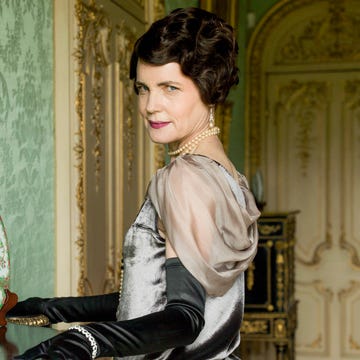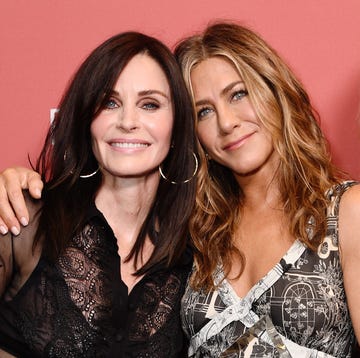Going grey is a journey, and it's often a long, tedious and not-remotely scenic one if you’re a brunette. While blondes can generally make the transition with relative ease, thanks to the use of strategic highlights, brunettes have traditionally struggled to work out the best way forward.
Going cold turkey can leave an unflattering root line as the natural greys come through, while going all-over lighter can be something of a jump scare, as well as one potentially impacting their hair’s condition. Plus, it’s a lot of money to pay if it’s a shade you don’t even love.
There is, though, another option which sits as an excellent halfway house. It’s less of an initial jolt, requires far less maintenance or financial outlay, and is one that feels like a modern, considered style choice rather than just letting nature take its course.
What to read next
It’s what’s known as the ‘halo method’, and it’s one we’ve seen Kristin Scott Thomas working to excellent effect lately. The actress, 65, has shifted away from the grey/mousey hybrid which she was wearing last year, and is going for a stylish ‘halo’ transition which mixes her natural dark hair with striking white pieces around the front.
Not only is it striking, it’s a technique that creates a flattering, ‘face lift’ effect, proving that going grey doesn’t have to mean looking older.
‘This is the perfect way of growing your grey hair out,’ confirms A-list hairstylist Gustav Fouche. ‘Most women go white around the hairline first, and what Kristin has done is really enhance those light pieces while giving the hair a beautiful texture.’
‘The contrast between the white pieces and her dark hair gives it a beautiful silver tone. It's very clean, and it really makes the skin pop. That contrast can really work on a lot of people.’
As with all things grey, there’s no one-shade-suits-all so talk to your hairdresser about how to adapt the ‘halo’ to best suit your own complexion. You might prefer something a little more creamy, and you’ll still get that ‘face lift’ look.
To keep your hair halo looking polished, Gustav’s advice is to enhance both light and dark areas equally. ‘Look at where the hair is white, and then get your hairdresser to make that white better and brighter,’ he says. ‘And where the hair is still naturally dark, make the dark better and richer by adding pigment.’
This creates a softer look than an all-over tint, he says, and you can ‘keep doing the same, over and over, as your hair gets more and more white overall. That's where the transition becomes super-easy and painless.’
‘If you look at Kristin's hair, the area at the back is still quite dark, and then you have the white hair sitting on top, makes it all look very modern and fresh. That’s what women should go for.’
Styling it like Kirstin does makes it even easier to wear. ‘What I especially love is the fact that she wears the hair out of the face, so the silver is not sitting directly on her skin,’ he says. ‘When we look at her skin tone, she’s naturally golden, and silver on the gold will give a very high contrast. That can work really well on a lot of people. With Kristin it really enhances her complexion.’
‘However, if you feel such a pale shade is too sharp on your skin tone, you can really soften it by wearing the hair off the face like Kristin does,’ he says. ‘By allowing some of your darker natural colour to come through, it gives depth in the face, and grounds the overall look.’
When you’re sweeping your hair into place, Gustav emphasises the importance of using the right brush on delicate greys. His new Fab Brush has become an immediate obsession with the GH beauty team as it’s incredibly gentle on hair as well as giving the scalp an invigorating blood flow boost.
‘It doesn't place tension on the hair, and that’s especially important if hair is delicate from being lifted, or drier from being grey.' he says. This creates 'softness and texture, but without any breakage’.
You’ll also find advice on the best cuts, shampoos, treatments and colour-enhancing products in our comprehensive guide on how to go grey without looking older.
















